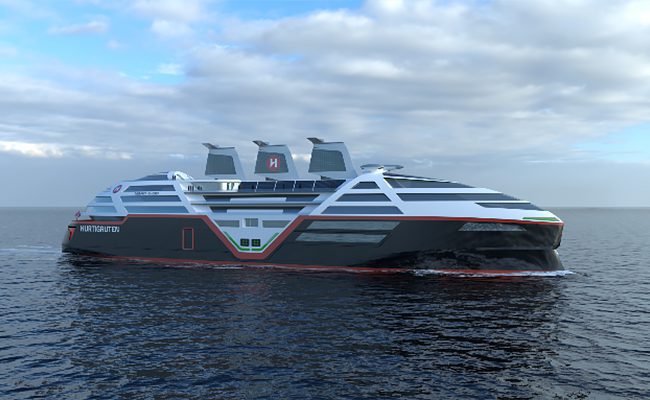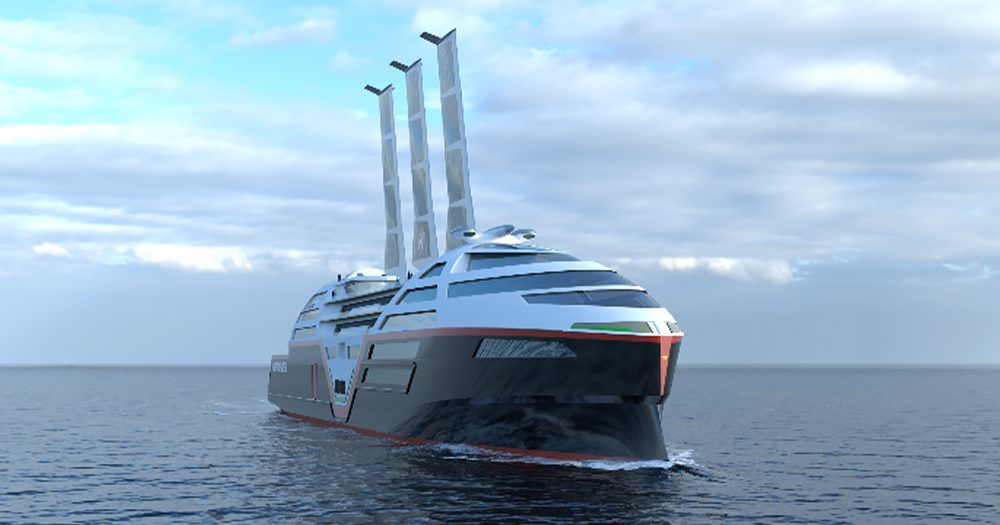As Hurtigruten Norway counts down to its 130th anniversary on July 2, the leaders in sustainable cruising have today announced more details of its pioneering zero-emission vessel initially revealed in March 2022 under the name Project Sea Zero.
In the days leading up to its historic 130th anniversary, Hurtigruten Norway has shared its bold blueprint for the carbon-neutral ship of the future.
Initially unveiled in March 2022 as Project Sea Zero, this trailblazing plan aims to create the world’s most energy-efficient cruise vessel ready to sail by 2030.
In partnership with a 12-member consortium of maritime partners and research institute SINTEF, Hurtigruten Norway has dedicated itself to the goal of making emission-free marine travel a reality.
Damian Perry, Managing Director, VP of Sales & Marketing, Asia-Pacific, expressed his enthusiasm, saying, “Our latest ESG Report showcases our deep commitment to bolstering our sustainability initiatives, a mission that resonates with our Australian and New Zealand guests.

“We’re a forward-thinking organisation that takes pride in ‘walking the talk.’ We’re committed to developing a sustainable future that has the potential to revolutionize the cruise industry. Project Sea Zero embodies the essence of our mission.”
Perry further emphasised Hurtigruten’s role in pioneering sustainable travel, stating, “We’re proud to be part of this global first – a zero-emission ship, which puts us at the forefront of innovative development and the necessary reimagining of the cruise industry”.
With only 0.1% of the world’s ships using zero-emission technology, Hurtigruten Norway’s project could significantly improve the sustainability record of the broader cruise industry and the future of travel.
The company’s first carbon-neutral ship is set to launch in 2030, with plans to subsequently transform its entire fleet into zero-emission vessels.
What will these future-ready vessels offer?

Hurtigruten Norway’s upcoming ships will all be powered by electricity, with batteries charged in port. The first ship will combine a 60-megawatt battery solution with wind technology, bringing a host of unprecedented features and enhancements not seen on cruise ships before:
- Autonomous, retractable sails with solar panels covering a total of 1,500m² (16,146 ft²) and a maximum height of 50m (164 ft) when fully extended.
- AI systems to gather data and determine the most efficient docking and undocking procedures, enhancing in-port operations during challenging weather.
- Innovative features include contra-rotating propellers, multiple retractable thrusters, air lubrication, advanced hull coating, and proactive hull cleaning.
- Battery levels are displayed on the ship’s external sides.
- The bridge will be significantly reduced in size due to enhanced AI navigation, similar to an airplane cockpit.
- Streamlined ship design to minimize air resistance, conserve energy, and enhance passenger comfort.
- Ample outdoor space and enlarged surface areas with dedicated windows for stunning views of the world’s most beautiful coastline.
- Guests can actively participate in energy conservation through an interactive mobile app that allows them to manage cabin ventilation and track their water and energy consumption.
Project Sea Zero has now entered a two-year period of rigorous testing and development to fine-tune these proposed technologies, all geared towards the ultimate zero-emission ship.
This phase focuses on battery production, propulsion technology, hull design, and sustainable practices to minimize energy consumption. The introduction of world-first technologies for onboard hotel operations, which can use up to 50 per cent of the ship’s total energy, is crucial to the project’s success.
The green evolution continues

Hurtigruten Norway is also working on substantial environmental upgrades to its existing fleet, marking one of the most significant green initiatives in European maritime history.
In September last year, the cruise line introduced an environmentally upgraded, battery-hybrid powered ship, MS Richard With, the first of the Coastal Express fleet to be updated with state-of-the-art technology to reduce carbon and nitrogen oxide emissions.
Speaking about the company’s continued green evolution, Hurtigruten Norway CEO Hedda Felin said, “When we initially announced the Sea Zero project over a year ago, we were faced with the challenge of not knowing which technologies would be available to us in 2030. Our task was to pave the way for new innovations and enhance existing ones to align with our sustainability objectives.
“While some of these technologies have reached a relatively advanced stage, they still necessitate dedicated research and development to ensure successful implementation within the maritime context.
“On the other hand, certain technologies are still in early development and require fundamental research and thorough testing. Following a rigorous feasibility study, we have pinpointed the most promising technologies for our ground-breaking future cruise ships.
We are committed to delivering a ship that surpasses all others in terms of energy efficiency and sustainability within just a few years,” said Felin.
For more, head to www.hurtigruten.com.au






